Using a Roth IRA for Education Expenses: A Guide to Maximize Savings and Minimize Taxes
When it comes to funding education expenses, there are a variety of options available. One lesser-known option is using a Roth IRA. While typically thought of as a retirement savings vehicle, a Roth IRA can also serve as a valuable tool for funding education expenses. In this guide, we will explore the benefits of using a Roth IRA for education expenses, eligibility and contribution limits, as well as other savings options available.
Understanding the Basics of a Roth IRA
Before diving into the specifics of using a Roth IRA for education expenses, it is important to have a clear understanding of what a Roth IRA is. A Roth IRA is an individual retirement account that offers tax advantages to individuals who meet certain criteria. Unlike traditional IRAs, contributions to a Roth IRA are made with after-tax dollars. This means that withdrawals in retirement are tax-free, including any growth on the investments made within the account.
Tax-Free Growth of Contributions
One of the major benefits of using a Roth IRA for education expenses is the tax-free growth of contributions. When funds are contributed to a Roth IRA, they can be invested in various assets such as stocks, bonds, or mutual funds. Over time, these investments have the potential to grow in value. Unlike a traditional IRA, where withdrawals are taxed as ordinary income in retirement, withdrawals from a Roth IRA are tax-free as long as certain conditions are met.
For education expenses, this means that any growth on the contributions made to a Roth IRA can be withdrawn tax-free to cover qualified education expenses. This can be particularly advantageous for individuals who expect their investments to grow significantly over time.
Penalties and Withdrawal Limitations
While using a Roth IRA for education expenses can be a smart financial move, it is important to be aware of the penalties and withdrawal limitations that come with it. Generally, withdrawals from a Roth IRA before the age of 59 ½ are subject to a 10% penalty, in addition to ordinary income taxes. However, there are exceptions to this penalty when it comes to using the funds for education expenses.
According to the IRS, withdrawals from a Roth IRA for qualified education expenses are exempt from the 10% penalty. Qualified education expenses include tuition, fees, books, supplies, and equipment required for enrollment or attendance at an eligible educational institution. It is important to note that room and board expenses are generally not considered qualified education expenses unless the student is enrolled at least half-time.
Other Savings Options for Education
While a Roth IRA can be a valuable tool for funding education expenses, it is not the only option available. Other popular savings options for education include 529 plans, Coverdell Education Savings Accounts, and traditional IRAs.
529 plans are state-sponsored savings plans specifically designed for education expenses. Contributions to a 529 plan are made with after-tax dollars, similar to a Roth IRA. However, the growth on these contributions is tax-deferred and withdrawals for qualified education expenses are tax-free.
Coverdell Education Savings Accounts (ESA) are another option for education savings. Similar to a 529 plan, contributions to a Coverdell ESA are made with after-tax dollars. The growth on these contributions is also tax-deferred and withdrawals for qualified education expenses are tax-free. However, there are income limits and contribution limits for Coverdell ESAs.
Traditional IRAs, on the other hand, are tax-deferred retirement savings accounts. Contributions to a traditional IRA may be tax-deductible depending on income level and participation in an employer-sponsored retirement plan. While traditional IRAs are not specifically designed for education expenses, they can still be used to fund education costs. Withdrawals from a traditional IRA for education expenses are subject to ordinary income taxes but are exempt from the 10% penalty.
Utilizing Roth IRA Withdrawal Rules to Cover Education Expenses
Now that we have explored the basics of a Roth IRA and other savings options for education, let's dive into how to utilize the withdrawal rules of a Roth IRA to cover education expenses. As mentioned earlier, withdrawals from a Roth IRA for qualified education expenses are exempt from the 10% penalty.
To qualify for this exemption, the following conditions must be met:
- The funds must be used for qualified education expenses at an eligible educational institution.
- The withdrawal must be made by the account owner, their spouse, child, or grandchild.
- The withdrawal must be made in the same year the expenses are incurred.
By meeting these conditions, individuals can effectively use their Roth IRA as a tax-free source of funds to cover education expenses. This can be particularly advantageous for individuals who have already maxed out their contributions to other education savings accounts like 529 plans or Coverdell ESAs.
Conclusion
Using a Roth IRA for education expenses can be a smart financial move for individuals looking to fund their education goals. The tax-free growth of contributions, exemption from penalties for qualified education expenses, and the flexibility of withdrawal rules make a Roth IRA an attractive option. However, it is important to weigh the benefits against other savings options available such as 529 plans, Coverdell ESAs, and traditional IRAs.
By understanding the basics of a Roth IRA, utilizing the withdrawal rules effectively, and leveraging financial services from reputable companies, individuals can make the most of their education savings and plan for a successful future. It is never too early to start saving for education expenses, and a Roth IRA can be a valuable tool in achieving those goals. So, consider using a Roth IRA and start investing in your education today!





No comments